Health & Education
We all want the best care possible for our horses. The Heath & Education section covers both Learning Institutions, Organizations as well as many sources for equine assistance including Veterinarians and Farriers.
For those who want a to formally study horses, the Education section includes College Riding, Equine Studies, and Veterinary Schools. Learn about the wide variety of horses in the Horse Breeds section. Supplements and Treatments Therapy are also included in the section.
Everyone can learn from Fine Art and there are some specialty Museums that might surprise you.
Horses as a therapy partner enrich the lives of the disabled. These facilities are listed in our Therapeutic Riding section. To help children and young adults build confidence and grow emotionally, please see the resources available on the Youth Outreach page.
Looking for a place to keep your horse? You can find it in the Horse Boarding section. Traveling? Find a Shipping company or Horse Sitting service if your horse is staying home!
Want to stay up to date with the latest training clinics or professional conferences? Take a look at our Calendar of Events for Health & Education for the dates and locations of upcoming events.
Do we need to add more? Please use the useful feedback link and let us know!
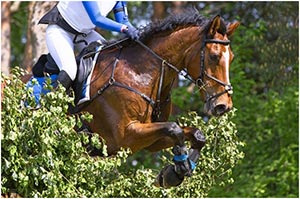
by Dr. Amy Gill
As the summer temperatures rise, heat and humidity become an issue for those trying to exercise and train horses without putting both horse and rider in danger of becoming dehydrated, fatigued or suffer from heat stress. Madalyn Ward, DVM in Holistic Horsekeeping provides this advice when trying to decide to ride or not in high heat and humidity: “Luckily, there are simple ways that you can help your horse stay cool during hot humid weather. During these weather conditions, the first thing to do is to calculate the temperature-humidity index (THI): simply add the air temperature (in degrees Fahrenheit) to the percentage of humidity.
For instance, if the air temperature is 80 degrees Fahrenheit and the humidity is 60 percent, the THI is 140. When the THI reaches about 150, your horse may have difficulty cooling off. At a THI of 180, you should not work your horse and you should take active steps to keep him cool.
Another method to check whether your horse is getting too hot during humid weather is to take his temperature. A horse’s normal temperature range is between 99.5 and 100.5 degrees Fahrenheit, and can reach 103 and 104 degrees during workouts. If your horse’s temperature reaches 105, he is danger of being overheated and can suffer chronic or permanent damage. Above 105 degrees, your horse will be suffering from heatstroke and will need immediate veterinary attention”.
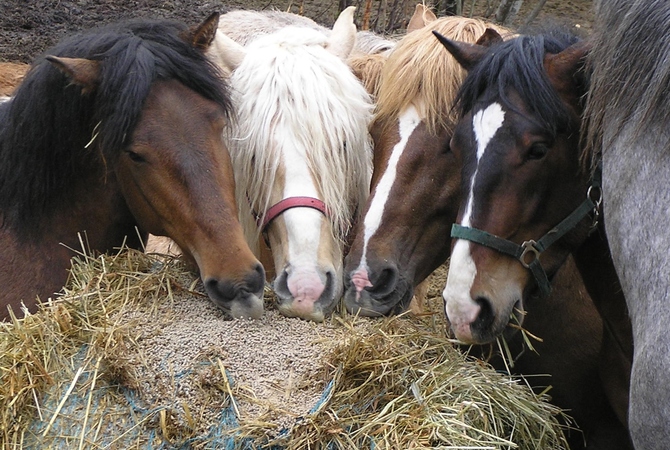
by Juliet M. Getty, Ph.D.
The ingredients tag on your commercial feed says it all. Protein source? Likely, soybeans. Fat source? Likely, soybean oil. But the love affair with soy is starting to fade.
An increasing number of feed manufacturers are coming out with soy-free lines due to consumer demand. There are several reasons for this:
- Many horses seem to be to allergic to soy, exhibiting respiratory, skin and digestive reactions. Some of this may be a legitimate allergic response to allergens found in soy or it could have nothing to do with allergies and may be related to GMO soy. Most soy grown in the US is genetically modified, which has been implicated for variety of health issues. Discussion about this is beyond the scope of this article but suffice it to say, that if you are going to feed soy, it is best to find a non-GMO, and preferably organic source.[i]
- It is difficult to ascertain from a feed label if the soy product has been heat-treated (necessary for inactivating trypsin inhibitor found in raw soybeans). Trypsin inhibitor reduces protein digestion.
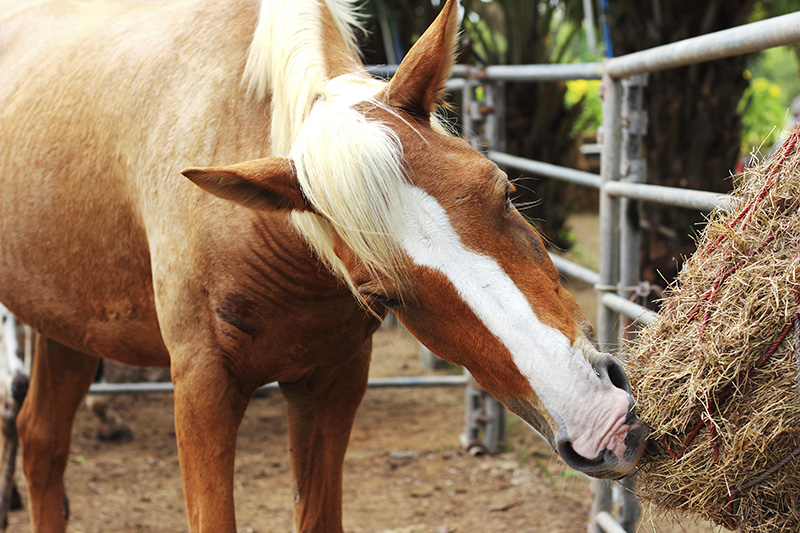
by Nancy S. Loving, DVM
Dental evaluation and procedures are common in equine veterinary practice. Two often-overlooked conditions were reviewed and presented by Travis Henry, DVM, DAVDC, and Cleet Griffin, DVM, DABVP, at the 2017 North American Veterinary Conference. Since being recognized a decade ago, tooth resorption and hypercementosis (EOTRH) are frequently identified. Equine practitioners will want to be aware of the presence of these syndromes.
Read more: Equine Odontoclastic Tooth Resorption and Hypercementosis
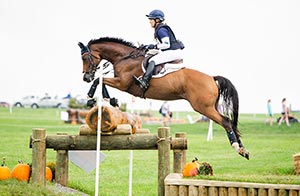
by Laura Crump Anderson, an Equestrian Fitness Specialist at InForm Fitness Leesburg. She is certified as a personal trainer by the American College of Sports Medicine and specializes in working with riders of all ages and disciplines. Read more of her EN fitness columns here.
For the equestrian, I have yet to find the silver bullet or formula that computes the exact fitness required of everyone. I have concepts, frame works, guidelines, but just like horses, human athletes have variables that impact their performance. An Advanced horse and a Beginner Novice horse do not require the same level of fitness. In fact, bringing a horse down from the upper levels can be just as challenging as moving up. Warmbloods typically require additional conditioning to reach peak fitness, compared to their Thoroughbred counterparts. Add imbalance or injury into the mix and you have enough variables for a scientist to struggle to approve anything as statistically significant.
Read more: What is the Ideal Conditioning Program for an Eventer?
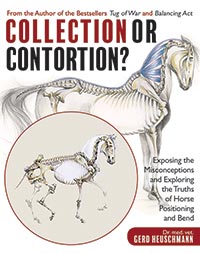
by Dr. Gerd Heuschmann
In this excerpt from his book Collection or Contortion? renowned veterinarian and advocate for the sport horse Dr. Gerd Heuschmann questions modern training methods that, while long known to be damaging to the horse’s body and mind, still find acceptance in arenas today.
Every rider dreams of having a horse that is easy to ride, supple, comfortable to sit on, elegant, and also meets the requirements of the preferred discipline. The horse should have a work ethic, be powerful and healthy, friendly, like to be with people, and be pleasant to get along with—in other words, a dream horse.
The fulfillment of this dream is largely in our hands. To achieve this, a long and very interesting path of development lies before us, and there will be many emotional moments along the way. There will be days of defeat and discouragement, but also many full of contentment and great joy!
The learning and development process of a rider takes many years, even decades, but finally puts him in the position to correctly train a horse. Over time, riding as many different horses as possible, as well as serious theoretical study, create an experienced, feeling rider. There are no young masters—even if you are considered a talented young rider!
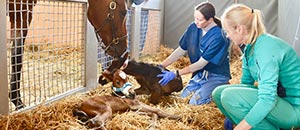
by Sacha Adorno
Excitement over a first pregnancy turned to concern for owner Adel Dukes Melson when her pregnant Holsteiner began showing signs of premature foaling. Weeks before the mare’s March 13 due date, her mammary gland started to develop and secrete milk, a typical indication that her body was preparing to soon give birth.
On February 19, Owner and horse traveled two hours from their home in Bethany Beach, Delaware to Kennett Square, arriving at New Bolton Center’s Emergency & Critical Care department at 8:30 PM.
There, they met Dr. Michelle Linton, Staff Veterinarian, Neonatal Intensive Care specialist, and part of Penn Vet’s High Risk and Healthy Mare Foaling programs.
That night, Linton and her team performed a physical exam, transrectal ultrasound, and fetal heart rate test. The next morning Treasure received an abdominal ultrasound to assess the fetus, uterus, and placenta.
Linton was expecting to find placentitis, the most common reason for premature mammary gland development and a potentially life-threatening condition for mare and foals.
“Treasure came in as a likely placentitis case, and we treated her as one,” Linton said. “But her uteroplacental measurements were normal, suggesting we were maybe dealing with something more.”
Although the ultrasounds showed one fetus and one heartbeat, Linton suspected Treasure might be carrying twins, which could also explain early udder development – and which, surprisingly, can be easy to miss in prenatal exams. She admitted the mare — 317 days pregnant at this point — to the Neonatal Intensive Care Unit (NICU) for monitoring and rest. Over the next few weeks, Treasure grew bigger and bigger but didn’t go into labor.
Four Legs... Then Four More
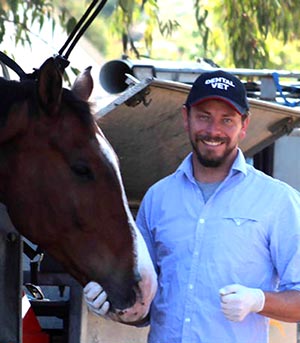
by Dr Shannon Lee BVSc, MANZCVSc Eq Dent, DICEVO
As dental surgery becomes more complicated, so too do the headaches.
For many horse owners, dentistry and dental complaints aren’t something that’s front of mind. After all, their horse looks fine, eats okay and can be ridden.
Furthermore, the assumption is often that, if there was a problem, it would be new, easily identified and quickly fixed, so things could go back to the way they had always been… Right? Wrong!
Fundamentally, this attitude simply derives from a lack of understanding. More often than not, it is also one of the reasons why if a serious issue is discovered in your horse’s mouth necessitating surgery, it may be far more challenging than you might expect. Therefore, delaying diagnosis and early treatment may be both costly and reduce the likelihood of an ideal outcome.
In plain English, this means getting the right advice as early as possible gives you and your horse the best chance of getting things back on track.
Two of the most common comments made by horse owners as they gain a better understanding of equine dental care are:
“I didn’t realise horses’ teeth went so far back!” and “I had no idea their teeth were so big!”
Contrast this with the fact that many horse owners still think tooth removal is a matter of simply ‘pulling’ a tooth; resulting in a huge gap between what’s actually required and many people’s understanding of what’s really involved - pun intended.
Surgery is surgery and so, the two main aims of any surgery will be to opt for the option that provides the best chance of success with the least chance of complication or risk. As surgeries become more challenging (read complicated), they increase the chances of a complication. For this reason, when dealing with dental surgeries, it is usually best to begin with the simplest approach and go from there.
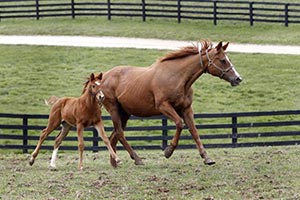
by Mary Jean Wall
The little guy must have felt like a foundling.
He was alone. He was confused. He’d been taken from his birth mother in late February after she kicked at him every time he tried to nurse.
Then, a most wonderful love story began unfolding. A Thoroughbred mare, Maizelle, who had lost her foal at birth two days previously was shown to the little guy’s stall at Machmer Hall Farm near Paris.
To the amazement of many, the two bonded instantly.
“She walked in and she was like, ‘Oh, you found him. Great,’” said Carrie Brogden, recounting how the substitute mother appeared to think the new foal was her own — a baby she never really saw because it died during its birth.
Her foal had died after Maizelle’s blood pressure dropped during foaling. Deprived of oxygen, the foal was undergoing seizures and not breathing when it emerged.
She’d been looking for her foal since then, nickering and wondering where it went. When she was shown the new baby she fell instantly in love.
Read more: A Rejected Foal and a Brokenhearted Mare Saved Each Other
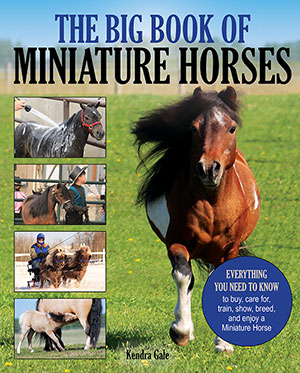
by Kendra Gale
The benefits of interaction with horses are only just beginning to be properly explored, and with their unique small size and very curious personality, Miniature Horses are very well suited to be therapy animals.
Equine Assisted Learning and Equine Assisted Therapy
Using horses as a part of psychotherapy, or to teach life skills, is a rapidly growing modality. Julia Morgan, of Horse Powered Connections, is a certified FEEL practitioner. FEEL stands for Facilitated Equine Experiential Learning, and horses are a very active participant in the process. Using a horse-led series of exercises, equine experiential learning works with the horse’s natural sensitivity to physical movement and emotional states to help people gain self-knowledge and acquire skills leading to personal growth through positive life changes.
Julia’s focus is on children. Her journey began with her own son, who was non-verbal and diagnosed as severely autistic. He is now an outgoing, talkative, and confident little boy, a transformation that Julia credits to the horses and learning to connect with his environment more like a horse would. Julia enjoys working with children and finds a special joy in helping children face the challenges arising from ADD (attention deficit disorders), anxiety, and ASD (autism spectrum disorder). She has seen remarkable changes from children’s interactions with the horses, from a teenage girl with ADHD (attention deficit hyperactivity disorder) who proclaimed that her brain had never been so quiet, to a young autistic boy who was once again excited to go to school and make new friends because he’d been able to make friends with the horse.
Read more: Miniature Horse Therapy: Great Big Good Things in Small Packages
- Man O’ War Project Helping the Soldiers of War Heal
- Is Icing Still a Valid Treatment for Injuries?
- Must-Have Secret Training Tools
- My Daughter is My Hero
- Horse Training: 7 Essential Steps for Safely Handling Your Horse's Feet
- Kinesiology Taping for Horses—It’s a Thing!
- AVMA Proposes Elimination Of Farrier Exemption From Veterinary Practice Act
- The Keys to Building Confidence in Your Horse from a Master Liberty Trainer
- What is a Shagya-Arabian?
- New Year’s Resolutions for the Senior Horse Owner
- Understanding Cold-Induced Laminitis
- Keeping Your Horse Calm Naturally During Stall Rest
- Holiday Treats for your Horses!
- How “Let’s Do It!” Can Change Your Horse Business…and Your Horse
- Dr. David Nash and NSF Grant Moves Equine Medicine into the Future, with Wide-Ranging Visions for Human Use, as Well
- Fall Equine Wellness: What Your Horse Needs
- The Effect of Minerals on the Insulin Resistance (IR) Horse
- Hurricane Harvey and Irma Horse Rescues
- Texas’ Horseback Emergency Response Team: Helping Hands and Horse, in the (Literal) Trenches
- What You Need to Know: Equine Leg Bandaging












































